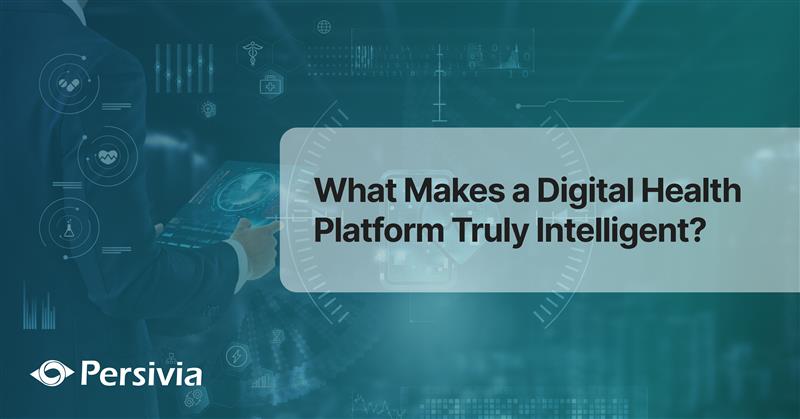In healthcare, one missing piece of data can mean the difference between the right diagnosis and a life-threatening error. Consider this: a patient’s allergy to penicillin is noted in one system but missing in another. A specialist, unaware of the allergy, prescribes the drug—triggering an adverse reaction that could have been entirely prevented. This scenario plays out daily for healthcare providers navigating disconnected information systems, highlighting the fundamental challenge modern healthcare technology must address.
The problem continues to grow more complex as healthcare data explodes in volume, velocity, and variety. Every patient interaction generates information across multiple formats: structured data in electronic records, unstructured notes from clinicians, semi-structured forms from patient portals, claims from insurers, and readings from monitoring devices. Most healthcare systems were built decades ago—like houses with additions built by different contractors—functional but fundamentally disconnected. This fragmentation explains why many so-called “intelligent” platforms deliver underwhelming results; they merely skim across disparate datasets, missing the deeper connections that drive meaningful clinical insights.
Digital Health Platforms: Unifying the Patient Experience
Healthcare organizations face a multitude of entry points for patient interaction—not just a single digital front door, but numerous touchpoints throughout the care journey. Each interaction might involve different systems: scheduling platforms, EMRs, referral networks, and patient portals. When these systems don’t communicate effectively, patients experience fragmented care that diminishes satisfaction and potentially impacts reimbursements. The challenge isn’t simply having digital tools—it’s connecting them in ways that create seamless patient experiences.
This is where Digital Health Platforms (DHPs) emerge as transformative solutions. A well-designed DHP functions as a unified layer that connects previously siloed data across the healthcare enterprise. By integrating disparate technologies and applications on a cloud-based infrastructure, DHPs enable healthcare organizations to digitize end-to-end processes while preserving their existing IT investments. Rather than replacing functional systems, DHPs enhance their value by creating interoperability between legacy applications and newer technologies that augment traditional EMRs. The result is a connected ecosystem that reflects how patients actually experience healthcare—as a continuous journey rather than a series of disconnected transactions.

Industry Trends in 2025
The digital health sector stands at a pivotal moment in 2025, with optimism running high among industry leaders. According to a recent survey by Summit Health Advisors, 82% of senior digital health executives are optimistic about the sector’s trajectory, fueled by emerging technologies and increasing demand for virtual care. However, this optimism is tempered by significant challenges: data fragmentation, interoperability gaps, and the need for measurable clinical value remain top concerns.
Key trends shaping the future include:
• Personalized, AI-powered models: Platforms are leveraging artificial intelligence to deliver tailored care and predictive insights, moving from reactive to preventative models.
• Integration and interoperability: The industry is shifting towards unified digital ecosystems, breaking down silos to create seamless patient journeys and more effective care coordination.
• Patient-centric design: Modern patients expect digital sophistication and control, pushing platforms to enhance accessibility, transparency, and engagement.
• Regulatory evolution: As digital health industry grows, regulatory frameworks are adapting to ensure innovation aligns with patient safety and data security.
According to Gartner’s Best Practices to Maximize the Value of Digital Health Platforms report (insert link), DHPs guide organizations toward “faster value realization when responding to strategic imperatives and external uncertainties.” The most successful platforms offer:
• A composable architecture with a data fabric, packaged business capabilities (PBCs), and tools for rapid application development.
• High standards of cybersecurity and regulatory compliance.
• Strategic alignment with business, operational, and clinical goals, rather than a narrow focus on features or vendor lock-in.
Gartner notes that leveraging the expertise and innovation of DHP vendors allows healthcare organizations to differentiate themselves and advance care delivery in a rapidly changing environment.
Future of Digital Health Platforms: How CareSpace® Thinks and Acts
CareSpace® was designed with a fundamental principle: true intelligence requires comprehensive integration. Rather than functioning as an addition to legacy systems, it was architected from the ground up to unify healthcare data at its source.
Through partnerships with over 500 healthcare institutions, CareSpace® has developed integration pathways that seamlessly collect and harmonize information from all EHRs, claims data, labs, HIEs, patient-reported outcomes, SDOH, and devices to create a longitudinal patient record. This integration transforms raw data into actionable intelligence through a data fabric and lakehouse architecture-combining flexibility with performance to manage everything from HL7 messages to consumer preferences. Its proprietary NLP engine extracts clinical meaning from unstructured physician notes, while evidence-based predictive analytics support accurate readmission predictions, risk stratification, and personalized care pathways. Clinical decision support is delivered in real time, reducing cognitive burden and preventing errors at the point of care.
Conclusion
In the current healthcare landscape, true intelligence in digital health platforms goes far beyond basic data collection or isolated AI tools. It requires seamless integration of diverse data sources, advanced analytics grounded in clinical context, and real-time decision support that empowers providers and patients alike. Platforms like CareSpace® demonstrate how comprehensive unification of healthcare data can transform fragmented information into actionable insights, ultimately improving outcomes and patient care. As the industry evolves, the most intelligent digital health platforms will be those that bridge gaps, adapt swiftly to changing needs, and deliver meaningful, personalized care-proving that when data is right and connected, everything can go right.
Table of Contents
